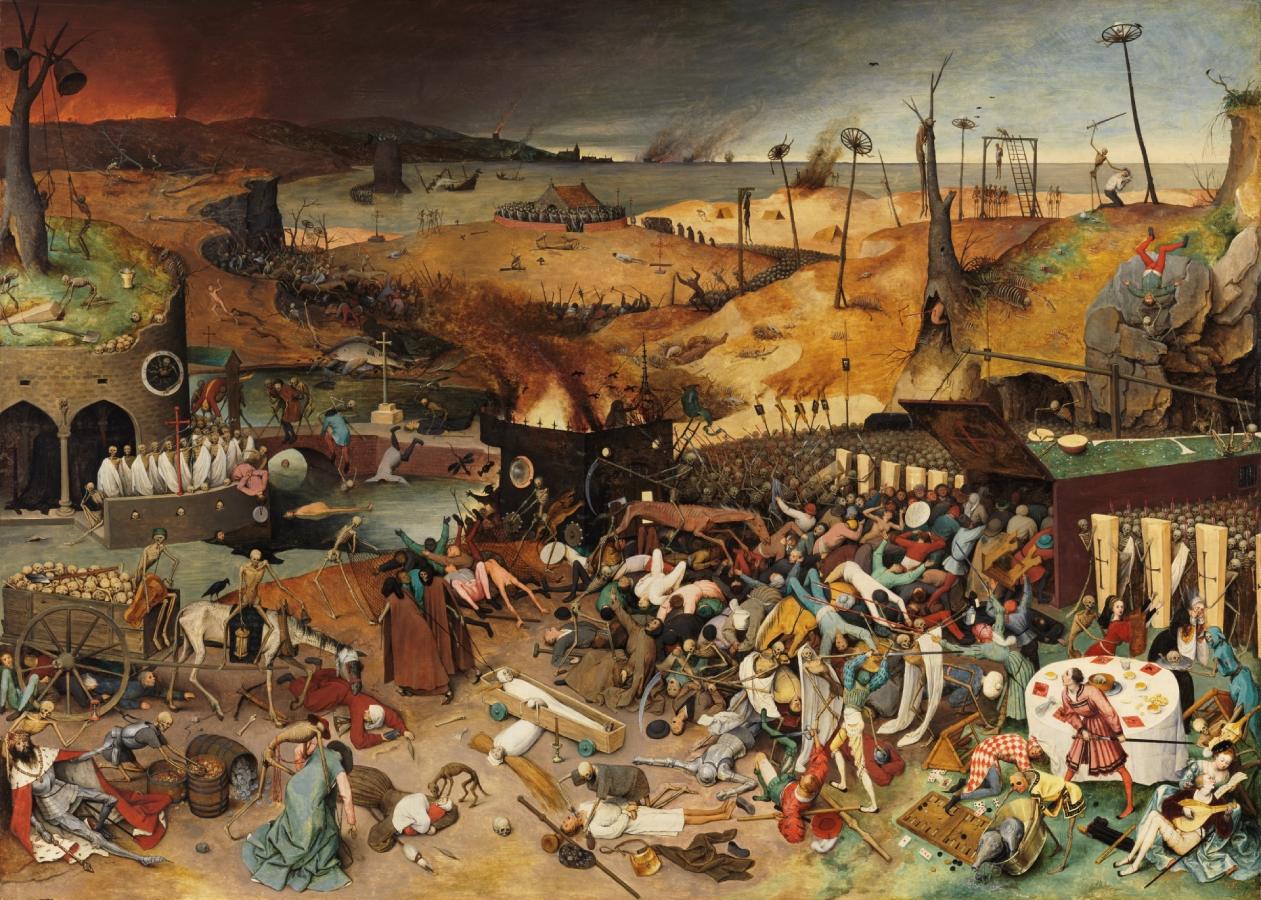Bruegel the Elder, Pieter (c.1525-1569)
The Triumph of Death
1562–1563
Oil on panel, 117 x 162 cm
Museo del Prado, Madrid
In this moral work, the triumph of Death over mundane things is symbolized by a large army of skeletons razing the Earth. The background is a barren landscape in which scenes of destruction are still taking place. In the foreground, Death leads his armies from his reddish horse, destroying the world of the living. The latter are led to an enormous coffin with no hope for salvation. All of the social institutions are included in this composition and neither power nor devotion can save them. Some attempt to struggle against their dark destiny while others are resigned to their fate. Only a pair of lovers, at the lower right, remains outside the future they too will have to suffer. This painting depicts a customary theme in medieval literature: the dance of Death, which was frequently used by Northern artists. Bruegel casts the entire work in a reddish-brown tone that gives the scene an infernal aspect appropriate for the subject at hand. This scene is influenced by both the medieval tradition of the Dance of Death and by depictions of the Triumph of Death in Italian painting. The profusion of scenes and moralizing sense applied by the artists are part of Hieronymus Bosch‘s influence on this work. This painting belonged to Queen Elizabeth of Farnese and was at the La Granja Palace in 1745. (MNP)
